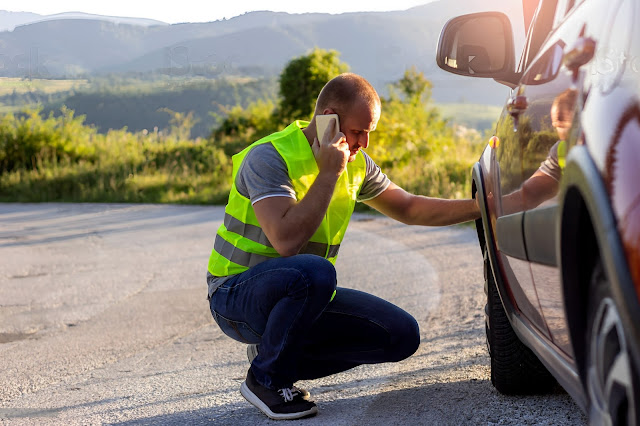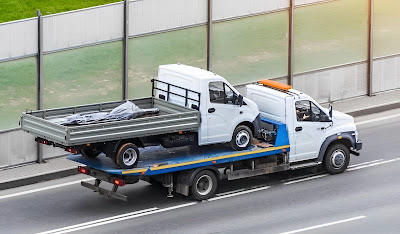A Guide To Stress-Free Travel With Roadside Assistance
Traveling is one of life’s greatest pleasures, allowing us to explore new places, experience different cultures, and create lasting memories. However, the excitement of a trip can quickly turn into stress if your vehicle breaks down unexpectedly. Whether it’s a flat tire, a dead battery, or running out of fuel, these situations can quickly turn your road trip into a stressful experience. That’s where roadside assistance becomes your best travel companion, ensuring a smooth and stress-free journey.
The Importance of Roadside Assistance
One of the primary reasons to invest in roadside assistance is the peace of mind it offers. Knowing that help is just a phone call away can ease the stress and anxiety that often accompany unforeseen car troubles. Whether you’re in the middle of nowhere or driving through a busy city, having roadside assistance ensures that you’re never stuck for long.

How Roadside Assistance Works
Now that we understand the importance of 24-hour roadside assistance let’s explore how it works and what services are typically offered:
- Subscription and Coverage: Roadside assistance is often provided as a subscription service by automobile clubs, insurance companies, and even some vehicle manufacturers. When you subscribe, you gain access to a range of services depending on your chosen plan. Coverage may vary, so it’s essential to review the terms and conditions to ensure it aligns with your needs.
- Emergency Contact: In the event of a breakdown or roadside emergency, you can contact the designated hotline provided by your roadside assistance service. This number is usually available 24/7, ensuring that help is accessible whenever you need it.
- Location and Vehicle Information: When you call for assistance, be ready to provide your location and details about your vehicle. This information is important for the service provider to dispatch the suitable assistance quickly.
- On-Site Assistance: The professional sent to your location will assess the situation and attempt to resolve the issue on-site. Whether it’s changing a flat tire, jump-starting your battery, or providing fuel, the goal is to get you back on the road as swiftly as possible.
- Towing to a Repair Facility: If the on-site assistance is not feasible, the next step is towing your vehicle to a nearby repair facility. Many roadside assistance plans cover a certain distance for towing, ensuring that you won’t be left stranded in the middle of nowhere.
- Follow-Up Assistance: Some roadside assistance services go the extra mile by offering follow-up assistance. This may include coordinating with a repair shop, arranging transportation for you and your passengers, or providing updates on the status of your vehicle.
Choosing the Right Roadside Assistance Plan
Selecting the right roadside assistance plan is crucial for ensuring that you receive the support you need when you need it. Here are some important factors to consider when choosing a plan:
- Coverage Options: Different plans offer varying levels of coverage. Some may focus on basic services like towing and jump-starts, while others provide more extensive coverage, including trip interruption benefits, rental car reimbursement, and additional perks. Evaluate your needs and choose a plan that aligns with your travel habits.
- Service Limitations: Pay attention to any limitations or restrictions imposed by the roadside assistance provider. This includes the maximum distance covered for towing services, the number of service calls allowed per year, and any specific conditions for coverage.
- Provider Reputation: Research the reputation of the roadside assistance provider. Look for customer reviews and endorsements to estimate the quality of their services. A reliable provider should have a network of experienced professionals and a track record of timely assistance.
- Cost and Value: Consider the cost of the roadside assistance plan in relation to the value it provides. While affordability is important, it’s equally crucial to ensure that the plan offers comprehensive coverage for potential scenarios you may encounter during your travels.
- Additional Benefits: Some roadside assistance plans come with additional benefits such as discounts on hotels, rental cars, and travel services. Explore these perks to maximize the value of your subscription.
- Response Time: The efficiency of the roadside assistance provider’s response time is crucial, especially during emergencies. Choose a trustworthy and reputed provider who has earned respect from people over the years, delivers reliable services, and offers people 24-hour roadside assistance for peace of mind.
Tips for a Stress-Free Road Trip with Roadside Assistance
Now that you’ve chosen the right roadside assistance plan, here are some additional tips to ensure a stress-free road trip:
- Pre-Trip Vehicle Inspection: Before beginning a road trip, conduct a thorough inspection of your vehicle. Check the tires, brakes, fluid levels, and battery. Address any issues beforehand to reduce the likelihood of a breakdown.
- Maintain Your Vehicle: Regular maintenance is the key to preventing unexpected breakdowns. Follow the manufacturer’s suggested maintenance plan, including filter replacements, oil changes, and brake inspections.
- Pack Essentials: In addition to your roadside assistance plan, pack a roadside emergency kit. This should include items such as a first aid kit, flashlight, jumper cables, tire pressure gauge, and basic tools. Being prepared can help you handle minor issues on your own.
- Keep Your Phone Charged: Ensure that your mobile phone is fully charged before hitting the road. A charged phone is essential for contacting roadside assistance and staying connected during your journey.
- Know Your Location: Be aware of your location at all times, especially in remote areas. This information is crucial when seeking assistance. Use GPS or map apps to pinpoint your location accurately.
- Follow Traffic Rules: Adhering to traffic rules and regulations reduces the risk of accidents and breakdowns. Avoid speeding, follow road signs, and practice safe driving habits to enhance your overall road trip experience.
- Communication with Assistance Provider: In the event of a breakdown, maintain open communication with your roadside assistance provider. Provide accurate information, follow their instructions, and stay updated on the progress of assistance.
- Emergency Contacts: Keep a list of emergency contacts, including your roadside assistance provider, local mechanics, and contacts at your destination. Having this information readily available can expedite the assistance process.
Conclusion
A stress-free road trip is not only about the destination but also the journey. Roadside assistance is the safety net that ensures you can navigate unexpected challenges with confidence, allowing you to focus on the joy of exploration. So, buckle up, hit the road, and let the 24-hour roadside assistance of Tic Toc Tow be your trusted companion on the path to stress-free travel.
Source: https://tictoctow.com/a-guide-to-stress-free-travel-with-roadside-assistance/


Comments
Post a Comment